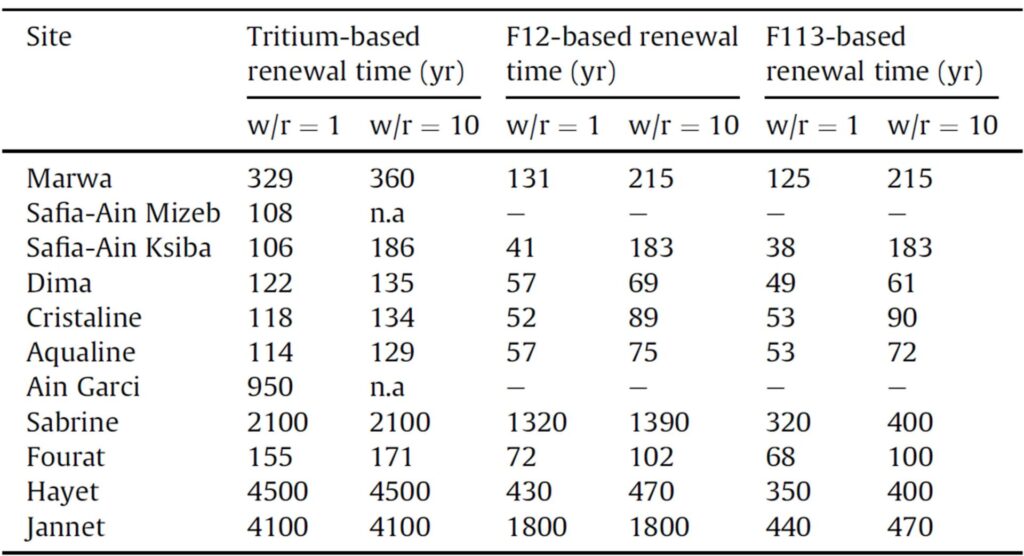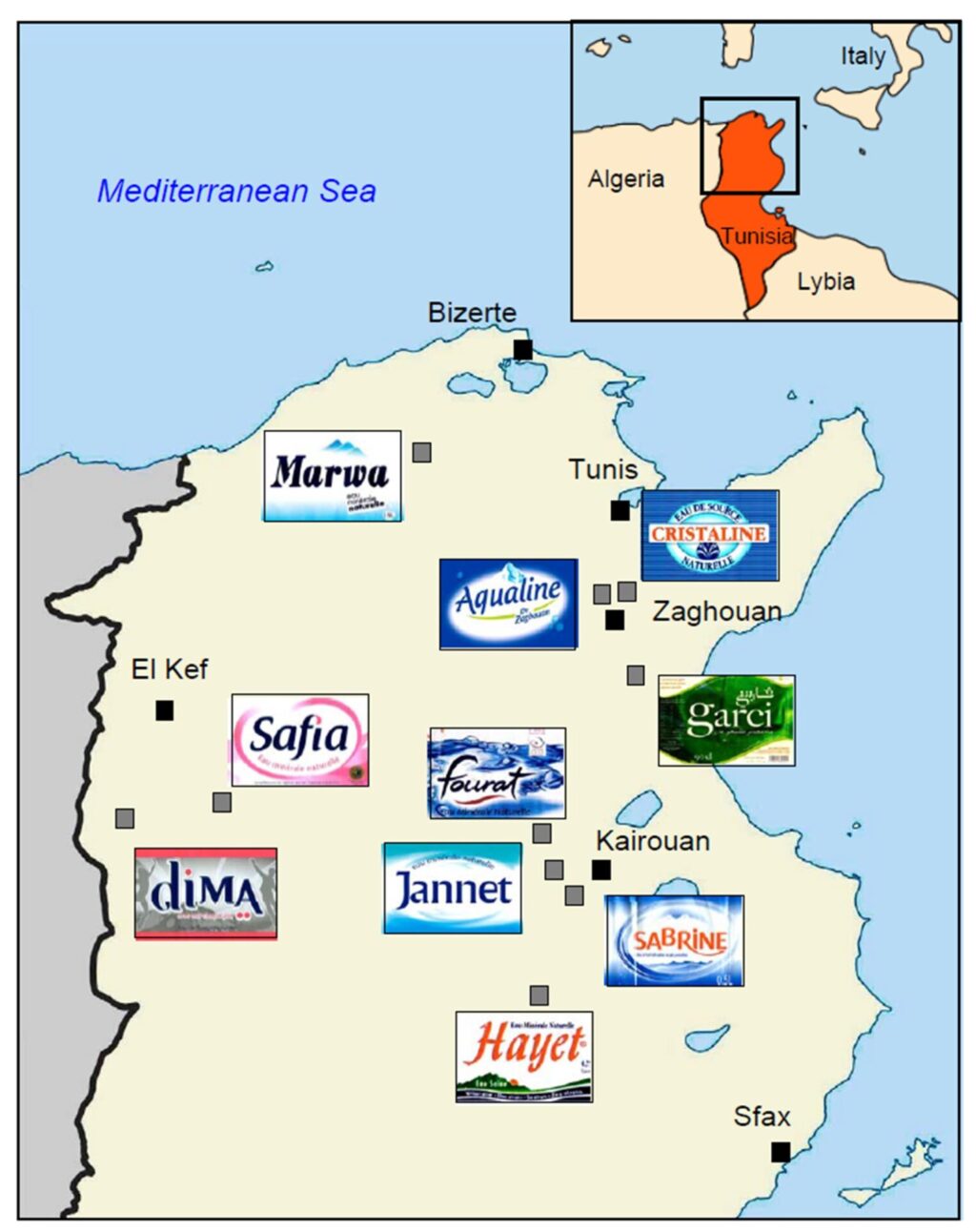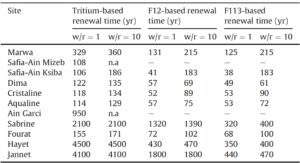Bottled waters are increasingly popular in Tunisia. Most of them come from groundwaters, thus raising the question of the long-term availability of the mineral groundwater resources. Water collected from production springs or wells of eleven mineral waters of Tunisia among the main commercial brands were analyzed for tritium (3H), helium-3, SF6, CFCs and carbon-14. Tracer-tracer plots indicate that all of the groundwaters of our data set are a mixture of modern rainwater with older groundwater flow waters that are beyond the time-scale of the transient tracers. 14C data suggest that the age of these old waters, which constitute the main water reservoir, is of the order of radiocarbon half-life or more. Most of the studied sites have groundwater residence times in the range 50-150 years.

For the sites where tracer concentrations are the most diluted by old waters, this value logically increase to several centuries.
Authors : P. Jean-Baptiste, E. Fourré, E. Gaubi, B. Minster, L. Aquilina, T. Labasque, J.L. Michelot, M. Massault, A. Ben Mamou
ref. :Clim. Past Discuss., doi:10.5194/cp-2017-118



